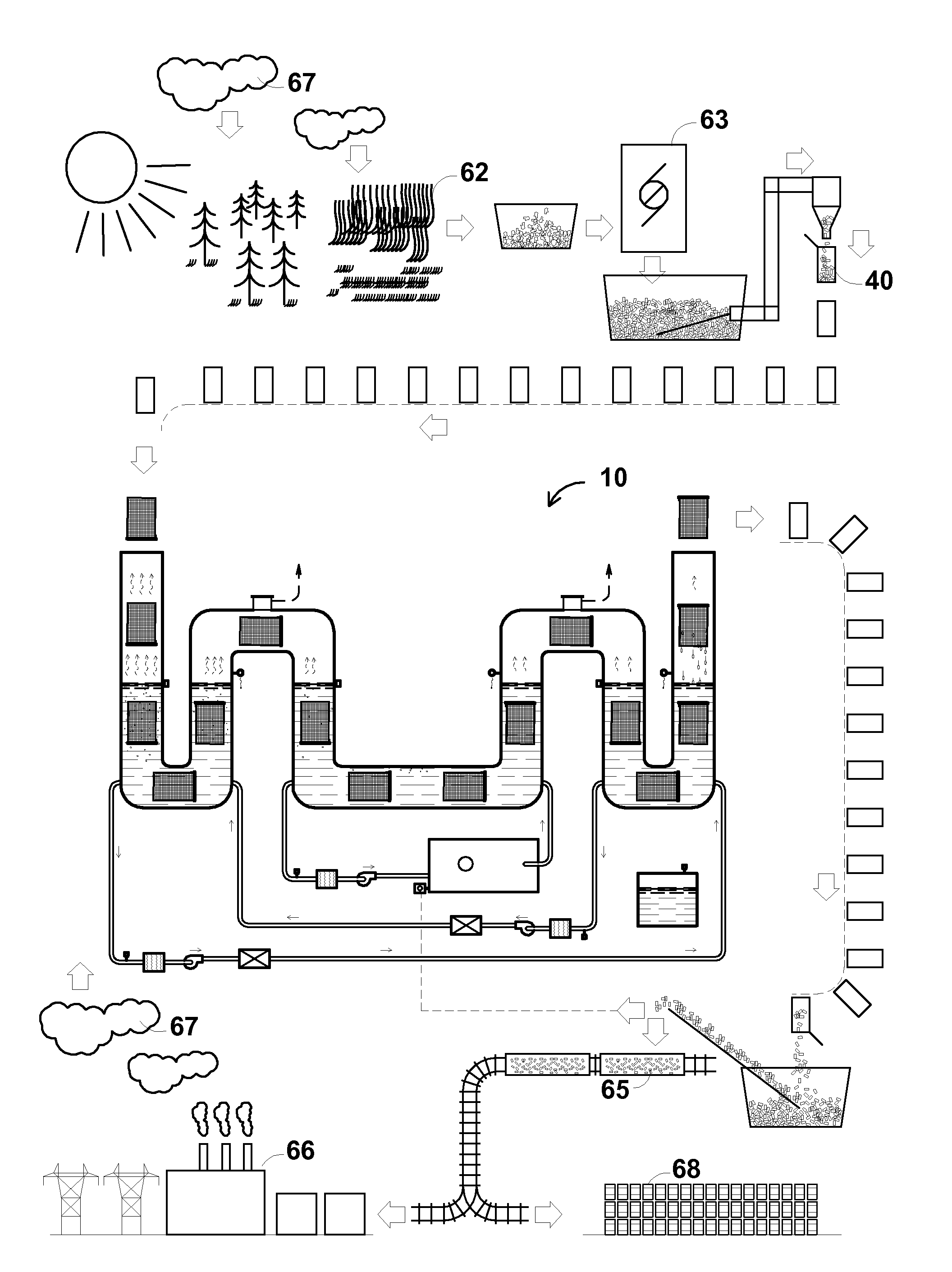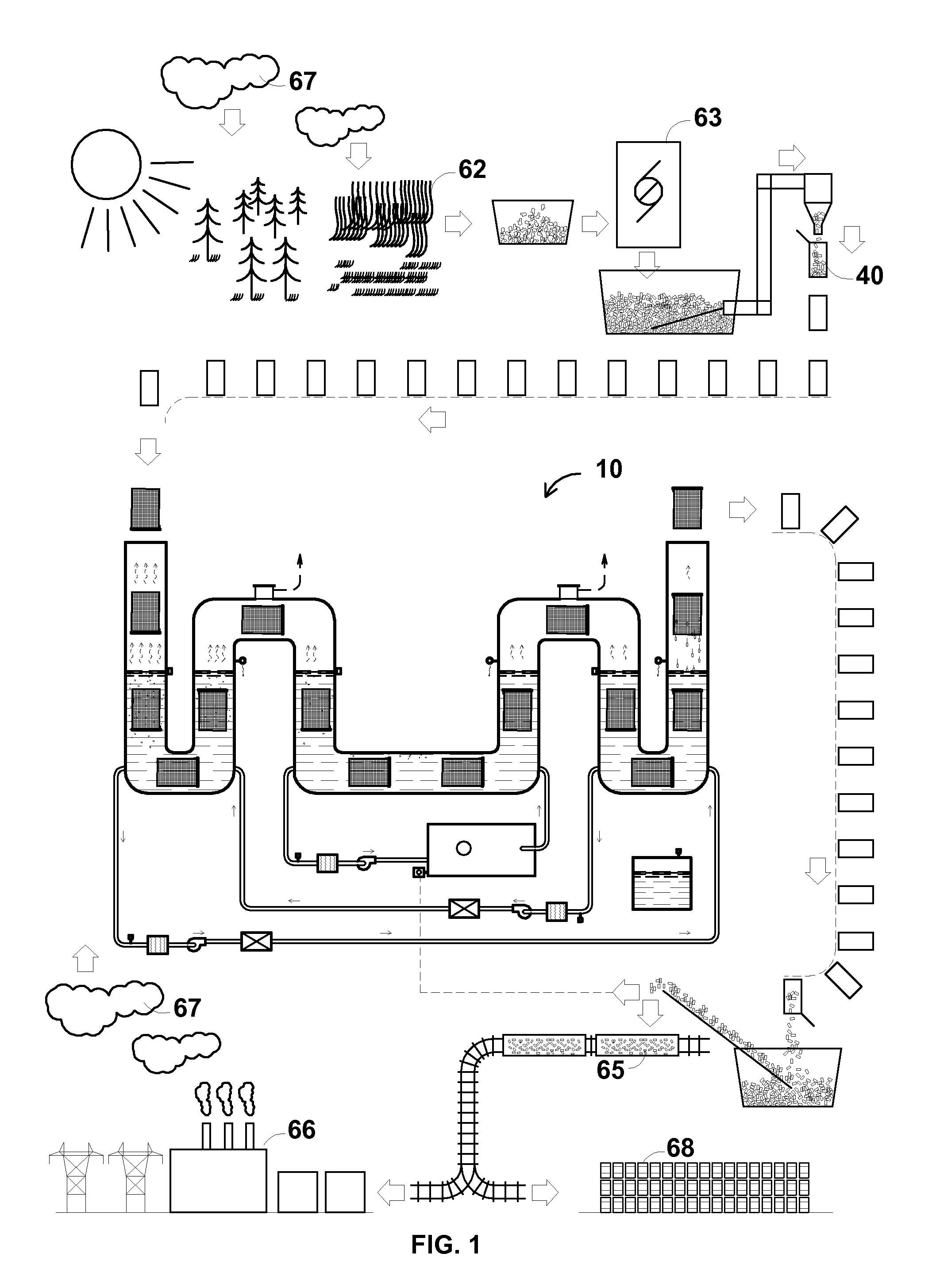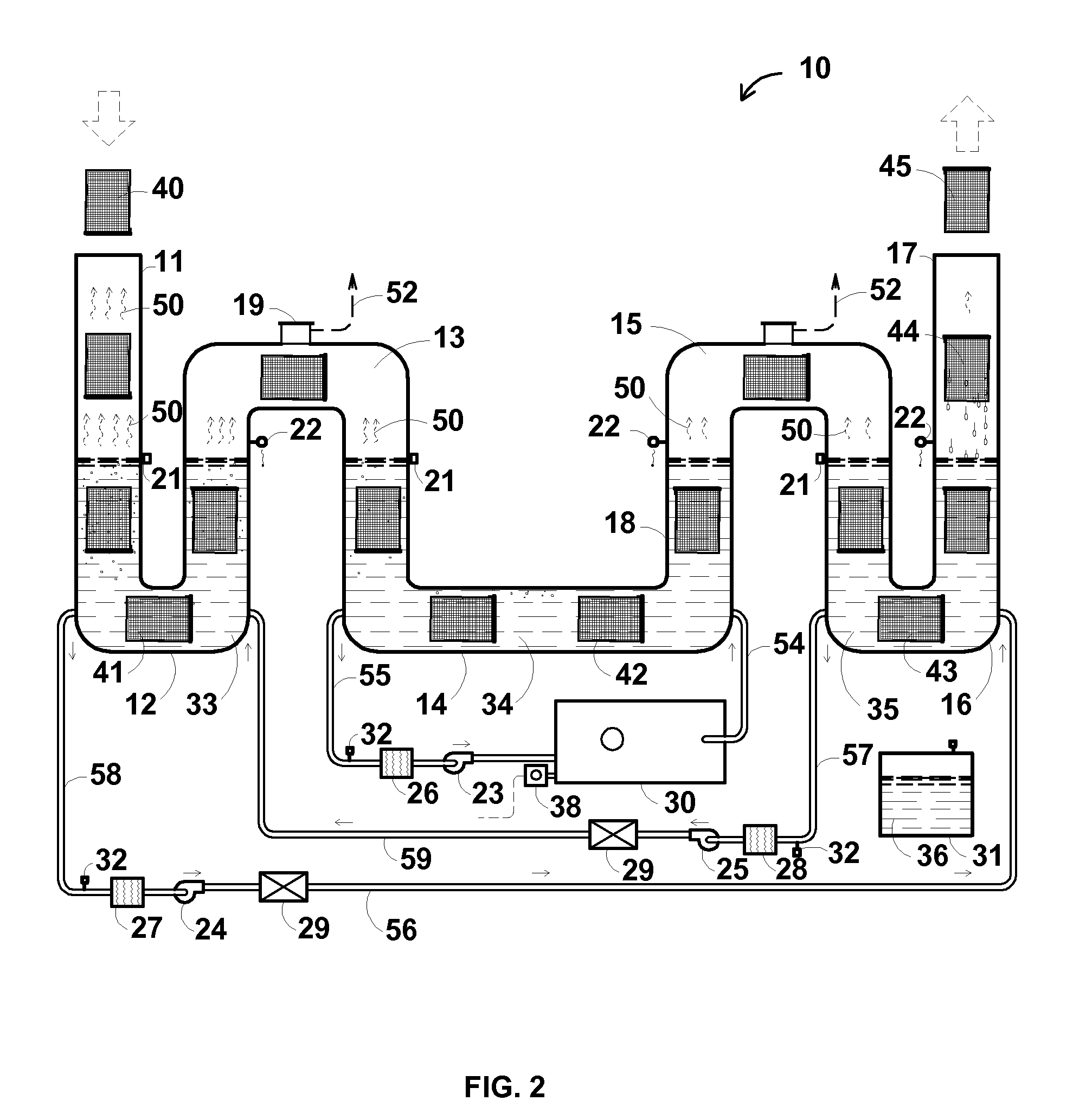Method and apparatus for biomass torrefaction, manufacturing a storable fuel from biomass and producing offsets for the combustion products of fossil fuels and a combustible article of manufacture
a technology of biomass and torrefaction, which is applied in the direction of waste based fuel, lighting and heating apparatus, solid fuel pretreatment, etc., can solve the problems of many decades from being practical on a large scale basis, fossil fuel depletion at an alarming rate, and the cost of implementing these technologies is staggering, etc. , to achieve the effect of reducing air pollution, high carbon content and easy transportation and storag
- Summary
- Abstract
- Description
- Claims
- Application Information
AI Technical Summary
Benefits of technology
Problems solved by technology
Method used
Image
Examples
Embodiment Construction
[0106]The present invention utilizes the “renewable” biomass derived from solar energy. The teachings of this invention turn this “renewable” biomass into a new compact, clean burning fuel with a high carbon content that can supplement of replace coal in electric power generating plants. This fuel is referred to herein as torrefied wood products in accordance with the present invention, or enhanced torrefied wood pellets (ETWP) or torrefied wood pellets (TWP). The term TWP, as used herein will be understood to refer not only cube shaped module of biomass that has been torrefied in accordance with the present invention as well as other shapes including modules, comminuted material, pellets, cubes, having ether individual pieces that are either uniform or non-uniform. In some embodiments various procedures for densification of the torrefied biomass will be employed.
[0107]This invention includes a method and apparatus to produce a renewable solar energy fuel. Not only can this new fuel...
PUM
| Property | Measurement | Unit |
|---|---|---|
| temperatures | aaaaa | aaaaa |
| vapor pressure | aaaaa | aaaaa |
| vapor pressure | aaaaa | aaaaa |
Abstract
Description
Claims
Application Information
 Login to View More
Login to View More - R&D
- Intellectual Property
- Life Sciences
- Materials
- Tech Scout
- Unparalleled Data Quality
- Higher Quality Content
- 60% Fewer Hallucinations
Browse by: Latest US Patents, China's latest patents, Technical Efficacy Thesaurus, Application Domain, Technology Topic, Popular Technical Reports.
© 2025 PatSnap. All rights reserved.Legal|Privacy policy|Modern Slavery Act Transparency Statement|Sitemap|About US| Contact US: help@patsnap.com



